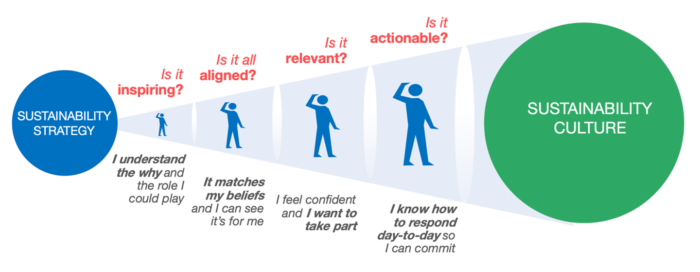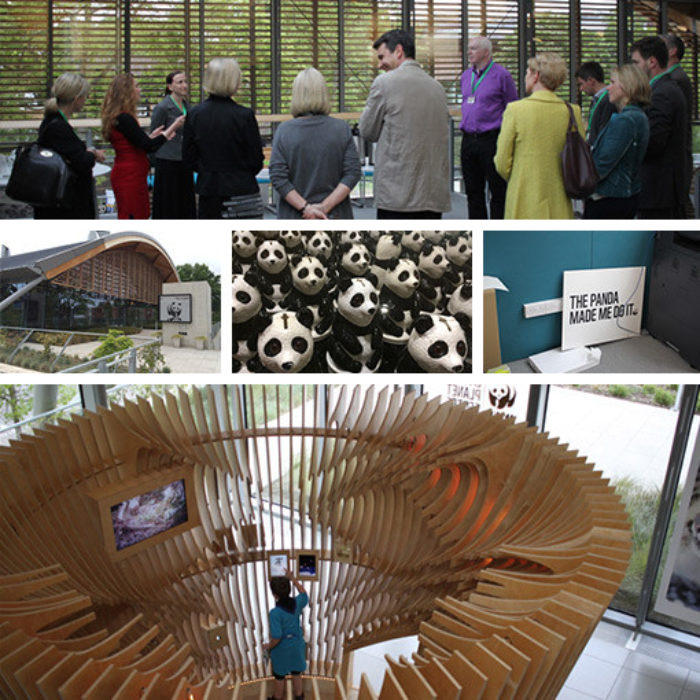5 steps to transform sustainability strategy into action
The Covid-19 pandemic brought into sharp relief the importance of resilience: the ability of assets, networks and systems to anticipate, absorb, adapt to and recover from a disruptive event. Subsequent waves of global events – the energy crisis, the war in Ukraine, the increasingly vivid impacts of the climate crisis and habitat loss – all heighten the immediacy of the need to act now.
Increasingly, the success with which an organisation embeds sustainability provides a strong indication of how well it will mitigate risks and achieve the required resilience.
The strategy-action gap
Business as usual is reaching its limit and organisations with a demonstrable commitment to sustainability increasingly reap longer-term value and trust. Furthermore, sustainable practices provide companies with a holistic vision of their business, so they can better manage risk and understand and anticipate stakeholder expectations.
But bridging the gap between sustainability ambition and practice can be difficult. And more often than not, the missing component is culture.
“Too many businesses think that the production of a cutting-edge strategy is enough…or set about telling everyone everything about the new sustainability targets, leaving a trail of confusion and inaction. Embedding sustainability thoughtfully and appropriately in the business means understanding that it will take time, and in the end is about changing the culture.”
Paul Polman, Ex-CEO Unilever
The cultural journey
Sustainability is a journey of organisational cultural transformation, with people at its heart. An organisation’s employees, and its workplace culture, are undeniably vital to sustainable business success: change is delivered by people, via strategic and cultural priorities, and culture is brought to life by people – colleagues, partners, customers, and other stakeholders.
Below is the cultural journey that takes employees, stakeholders and communities from passive recipients of sustainability strategy to active participants in a sustainability culture:

To create, support and nurture a sustainable business culture you need to take 5 steps…
Step 1: Define what you need people to do
To build a detailed picture of how colleagues can help you deliver your ambitions, you’ll need to consider people’s different motivations towards sustainability, and the specific beliefs, decisions and actions you’ll need from different groups.
This seems like a straightforward step, but in our experience, it is often the key challenge in turning what’s written in a strategy into a living culture; not having a good enough understanding of what actually needs to happen day-to-day to really engage colleagues can undermine the rest of the process.
Here are a few tips to help you frame your approach. The key priority is to build a clear picture of your ‘ecosystem’ for sustainability. We suggest a two-step approach. Firstly, look at motivations rather than functions, and identify who might help and who might get in the way. There are four options:
- Positive gatekeepers and influencers: Who really understands what sustainability means to the organisation, and who do colleagues trust?
- Decision-makers: Who really makes the key decisions when it comes to sustainability?
- Passive observers: Who watch from the sidelines but don’t really jump in?
- Blockers: Who are the colleagues most resistant to sustainability, and change in general?
Secondly, think about what you’d like each of these audiences to think, say and do, in order for you to be able to transform your strategy into a day-to-day reality within the organisation.
Step 2: Articulate the ambition
Now you’ve mapped colleagues based on their motivations, and articulated what you want them to do, the next step is to gain insight into what colleagues actually understand of what your organisation does, what you need them to know to achieve the ‘think – say – do’ goals above, and how you make the strategy accessible to get buy-in. Putting yourself in your colleagues’ shoes makes it much more likely you’ll achieve the desired practical engagement.
Our recommended approach is to explore your organisation’s key goals with colleagues, through informal conversations or workshop sessions. Your goals will be unique to your organisation, but might include: your sustainability ambition; your health and wellbeing targets; your journey to zero waste and zero carbon; and your approach to sustainable travel and transport etc.
By exploring these with colleagues, you can build a simple gap analysis that should identify your priority areas for increasing colleague understanding. And based on the levels of awareness and gaps in knowledge, you should articulate each of your goals or ambitions in a way that is both accessible to all/more colleagues, and more motivating.
Step 3: Connect with people’s beliefs
Beliefs matter: they drive motivation. A lack of connection between colleagues’ individual beliefs and your ambition for sustainability means you’ll struggle to engage people. Similarly, if your purpose and values don’t align with your ambition, you’ll lack credibility, and face an uphill battle to drive action. Let’s look at ways to build connections that help create a set of shared values around sustainability.
Start by drawing two overlapping circles. In one, list the sustainable values that matter to your colleagues. Pay attention to where sustainability issues feature in things like colleagues’ daily routines, and their interests outside of work. In the other circle, list the sustainable values that matter to your organisation. In this case, consider where sustainability features in things like your purpose, mission, values and strategy. Now, in the overlap area between the circles, write down any values that are shared by colleagues and the organisation.
Working from this starting point will help you identify and prioritise the values and beliefs where alignment is most important, and around which you should consider revisiting your organisational values in the contexts of sustainability and colleague buy in.
Step 4: Make it easy to participate
and
Step 5: Make it everyone’s job
These two steps can be considered together, and are about using the insights generated from the earlier steps to:
- Build confidence by nurturing the behaviours people need to take part, while considering how you empower colleagues, and which behaviours and skills you reward.
- Encourage commitment through practical opportunities to get involved, while considering where people naturally want to make an impact, and the moments that matter to them.
First, define a simple behaviour framework for sustainability. This will help drive consistency, and will give you a hook to embed specific activities into the day-to-day.
Second, develop specific programmes that champion, support and reward behaviours, encompassing:
- Comms and engagement (champion, to make it visible)
- Personal development (support, to make it easy)
- Reward and recognition programme (reward, to make it a habit).
Ready to get started?
The 5 steps detailed above are just one element of the process we follow with our clients. We have a wide range of other supporting tools that bring additional insight, depth and rigour, and which can help you take your colleagues, customers and communities on your sustainability journey.
We’d be delighted to discuss this further with you. Contact Tim.Parr@CorporateCulture.co.uk or call 0845 607 0000.




